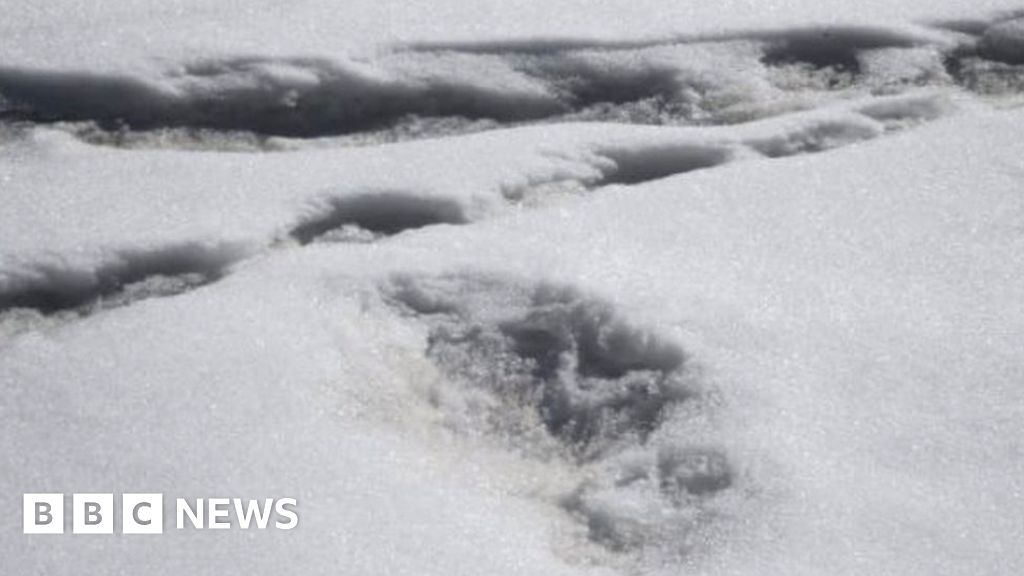 Indian Army
Indian ArmyThe Indian army has claimed to have found footprints of the yeti, sparking jokes and disbelief on social media.
The army tweeted to its nearly six million followers on Monday that it had discovered “mysterious footprints of mythical beast ‘Yeti’ at the Makalu Base Camp [in the Himalayas]”.
The yeti – a giant ape-like creature – often figures in South Asian folklore.
There is no evidence proving yeti exist but the myth retains a strong appeal in the region.
And the army has now added to the legend by sharing pictures of “footprints” in the snow on an official Twitter account.
Allow Twitter content?

Reacting to the disbelief on social media, the army said the “evidence” about the yeti had been “photographed ” and “handed over to subject matter experts”.
“So, we thought it prudent [to go public] to excite scientific temper and rekindle the interest.”
The yeti, also known as the Abominable Snowman, is a legendary creature that is said to inhabit the upper reaches of the Himalayas. Stories of people seeing the yeti or its footprints are common in parts of India, Nepal and Bhutan.
Twitter users reacted with disbelief that the Indian army would make such a bold claim about the footprints of a “mythical beast”.
Allow Twitter content?

Allow Twitter content?

Allow Twitter content?

The claim also inspired humour in good measure.
Allow Twitter content?

Allow Twitter content?

There have been numerous attempts in recent years to solve the mystery of the yeti.
And in 2013, DNA tests on hair samples carried out by Oxford University genetics professor Bryan Sykes found that they matched those from an ancient polar bear. He said the most likely explanation for the myth is that the animal is a hybrid of polar bears and brown bears.




